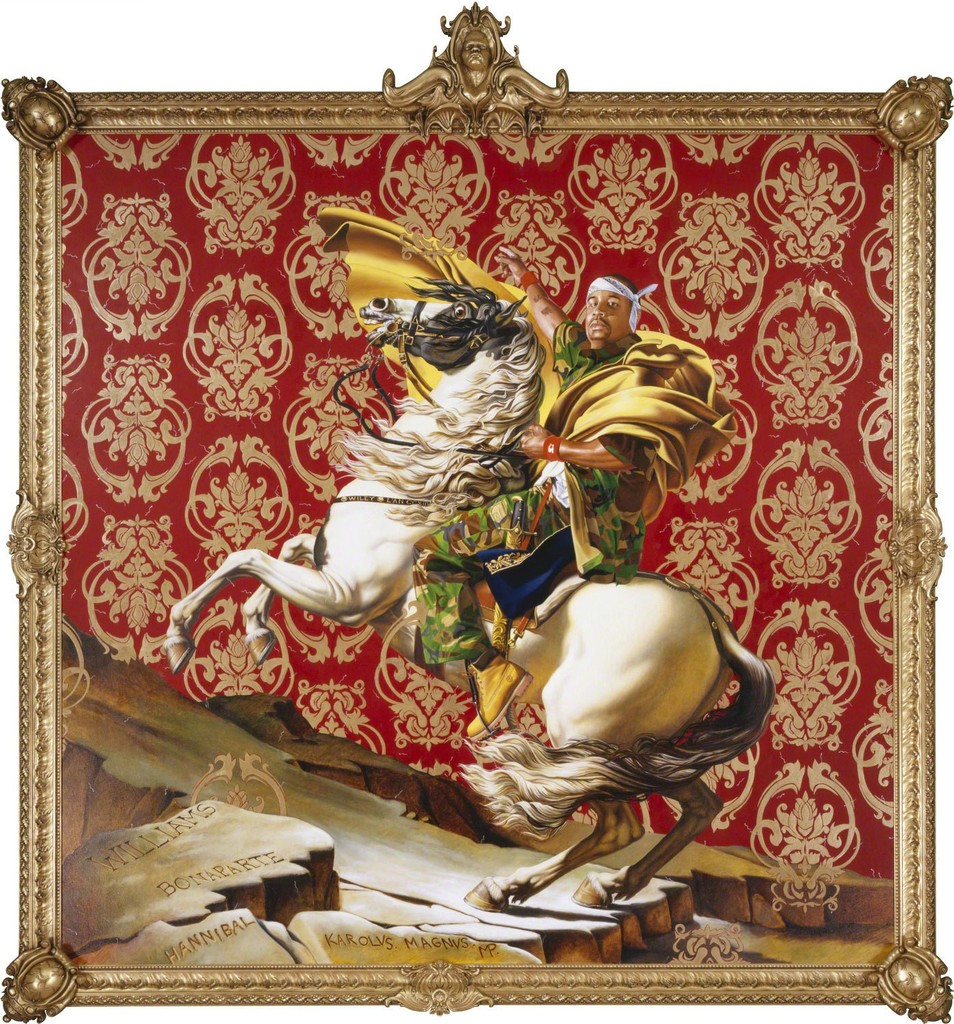In most of the art classes that I
have taken, we have learned about Kehinde Wiley’s work. I must admit that I
used to overlook these lessons, often forgetting who and what was shown,
gaining only a slight familiarity of certain names. However, learning to paint
with oils has been a humbling experience that has led me to the conclusion that
there is so much to learn, and that the artists we hear about in class, are
people who can provide us with the insight that we need to improve. There are
so many possibilities to explore the different properties of paint, different
means to get a desired color, and the possibility for vibrancy that can only be
achieved with oils.
Wiley works on large-scale canvases
and uses a photorealistic approach with the portraits of the models, standing
them in front of intricate, brightly colored backgrounds that are reminiscent
of historical textiles, including African and Islamic designs. In his ongoing
work the World Stage, Wiley goes out into the streets, wherever he is, and he talks to people who he thinks are interesting.
These people become the models for his paintings. He then matches them up with
backgrounds. His subject matter and models raise sociopolitical issues of
authority.
Among
the things that stand out in his portraits, is the intensity of the colors he
uses, the clothing and posture of the models, and their eye contact with the
viewer. The portraits have a personality, unique to each person. The model decides
how they want to be seen, so what we get as viewers is how the people want to be seen in a formal setting. What is perhaps the most compelling part of his
work, is the interaction between subject and background. The patterns seem to
come to life, weaving their way into the foreground, engulfing the figure in a
composition that is as much push, as it is pull. The bright colors he uses are
reflected on the faces making them glow with unexpected moments of color.





No comments:
Post a Comment